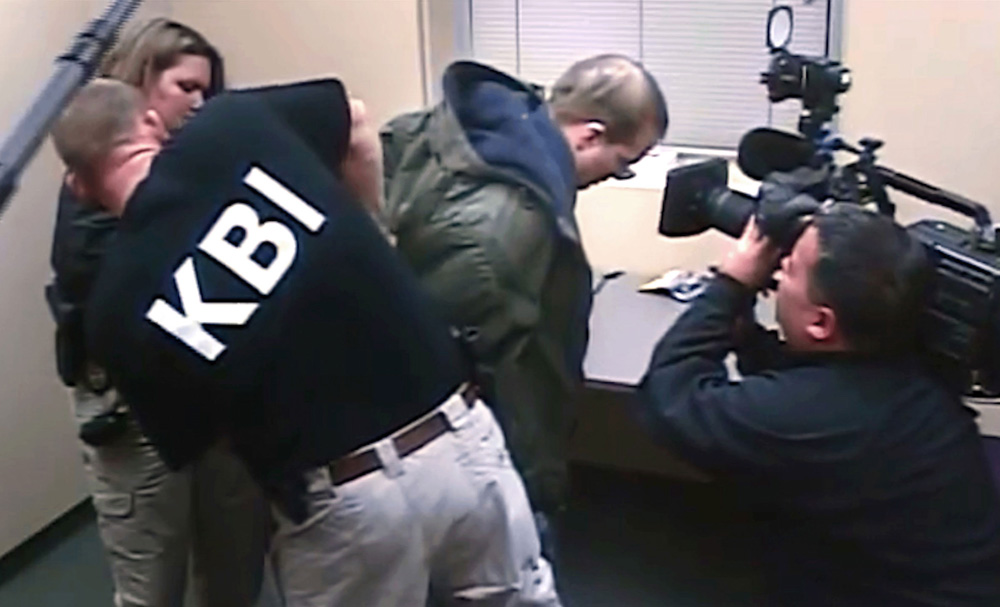It’s so obvious that it needs never to be mentioned in “Predators” that beyond the lurid appeal of “To Catch a Predator,” the Dateline NBC spinoff where host Chris Hansen would ambush men who would set up sexual encounters with minors before placing them in the hands of local law enforcement, it was an unusually tidy television premise. The viewer knew what they were getting as a would-be pedophile didn’t every time Hansen would emerge from another room, asking what they were here for in his booming stentorian voice. It was always good for a laugh in the same way “Candid Camera” once was and there was the reliable relief that someone bad was being brought to justice, with the lack of complexity making it ideal entertainment at the end of a long week when it would air late on Fridays.
However, director David Osit finds the reality is a lot messier in his riveting reflection on the show’s enduring popularity and what it actually accomplished, certainly demanding more of an audience than what could be expected by tuning into NBC back in the day but impressively resisting shaming anyone who wanted to watch. The director hopes to understand them as well as the people on the show, whose lives were ruined in an instant if not by a prison sentence by public perception that would be impossible to shake after Hansen basically served as judge, jury and executioner during a brief encounter on the show. What may have started out with good intentions as Hansen was inspired to host the series after working on a child sex trafficking expose in Cambodia can be seen as short-sighted and exploitative when the bait-and-switch approach that placed perpetrators immediately in the hands of local law enforcement not only deprived them of due process, often rendering prosecutions impossible when their confessions were given to Hansen rather than the cops after being read their Miranda rights, but avoided any talk of deeper psychological treatment that could be more necessary than being sent to jail.
Those questions were rarely raised when “To Catch a Predator” was an instant success, only coming to an end when a pursuit of an assistant district attorney in Texas resulted in a suicide and Osit finds that the formula persists in much cheaper versions these days as Hansen is helping to launch a burgeoning true crime YouTube channel, filled with the type of cop shows its owner says were abandoned by the major networks following the Black Lives Matter protests, and copycats stage their own versions with even less resources (and sensitivity) than the original program. While this all appears to be the last squeeze of a franchise that’s largely lost its novelty, “Predators” finds plenty of juicy moral dilemmas to dig into as the director sorts through how the operation worked with those involved from the actors who looked younger than their age that acted as decoys to law enforcement that was tasked with building a case from work done by a television program.
Few involved may have considered the lives they were dramatically altering as they were part of the production or ever seeing their marks as human, but Osit creates such opportunities throughout as some soften their stance upon seeing small commonalities they had as they watch old footage – one decoys remembers feeling sorry for someone lured in by the show that was having the same anxieties about college as she did, not being much older. The troubling realization emerges that as Hansen was hailed as a hero for his direct confrontation with pedophiles, there really was no confrontation at all when what made them the way they are went completely unexamined and untreated in a system with no investment in rehabilitation.
Osit doesn’t leave himself out of having to answer tough questions and “Predators” proves all the more absorbing when the irresistibility of “To Catch a Predator” can’t be denied, but the formal approach that places audiences at a comfortable distance with stark and stylish split screens and interviews in sterile environments holds the fear of ever getting too close to looking at the show as anything other than escapism. Although it’s reasonable for the director to be concerned with extending the legacy of a show so obviously problematic, it seems well worth it to make something that is just as difficult to shake, using it to reveal far deeper issues in a society where the goals of justice and entertainment can be so easily conflated with each other and the end results of both can be seen as disposable.
“Predators” does not yet have U.S. distribution.




